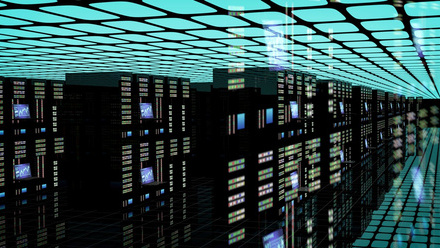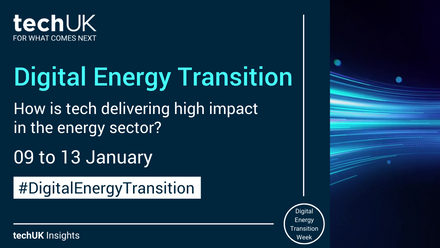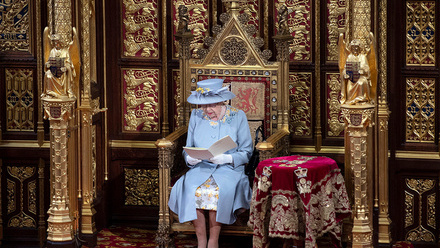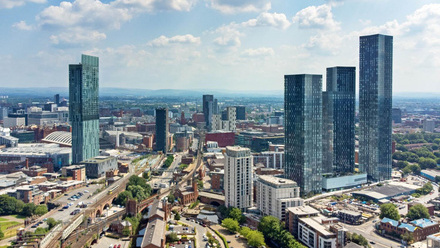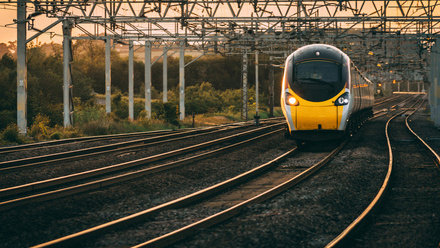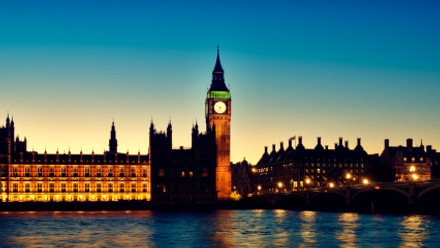Digital twins and public policy
Digital twins are digital models of real-world systems that take data in as near real time as possible and maintain an accurate representation of the system of interest. This gives them the potential to be very powerful tools in the world of public policy.
Traditionally, digital twins have been developed in manufacturing and construction. Components and parts can be created virtually, and then built from those digital models. The factories themselves can be modelled, and sensors across the factory update the model so that at any moment, the operators can see how the whole site is functioning. Models of buildings not only help design, but can support buildings when they’re being used. Heating and cooling, the use of power, and the status of elevators, doors, and so forth can all be tracked in a virtual model.
On a larger scale, we’re all getting used to the idea of live traffic tracking data being available on our phones so that we can make decisions about when and how to make journeys. The same data gives emergency services oversight of the whole transport network to identify problems and can be used to inform traffic planning decisions.
Improvements in technology are increasing the scope of digital twins, though, and opening up new ways in which they can help us tackle the challenges we face as a society. There are more digital sensors than ever before, greater volumes of data on us and the world around us, faster computers, and new ways to interpret and visualise data. Digital twin ideas are increasingly being applied to social, rather than engineering, problems.
There are several ways in which a digital twin could be called ‘social’. The most obvious is when the system being modelled is a social system – an organisation, or a community, or the people in a particular place. Models of crowds at events, or of people moving through the health or education systems; or of the population of a town responding to a crisis (or an infectious disease?) could all be termed ‘social’. Another is when the system being modelled might not be of people themselves, but of the things people will encounter in their environment – air quality, water levels, biodiversity – or their day to day lives – transport (as users), the tax system, regulations.
Finally, there is the idea of ‘socialising’ access to data through making a digital twin public. That traffic tracking data is an example. It doesn’t (just) go to the traffic planning authorities, it is made available to everyone. That has a powerful effect on individual agency and decision making, but also on raising awareness and creating a level playing field in terms of who knows what.
All of these have significant implication for those making policy in government, be that national, regional or local.
Digital twins for policy rehearsal
A digital model of people – as a group – gives policy makers a sand box in which to rehearse policy interventions. These models take the idea of behavioural modelling, explored during covid, a step further. They can be statistical, or they can be ‘agent-based’ with each member of the population represented individually (either accurately or as some statistically normalised abstraction). The environment can be modelled, as well, so that the model can take account of the way people interact with it.
A simulation environment can then be created which mirrors the real situation, but which allows different policy interventions to be tested. Responses to civil unrest have been tested in synthetic environments, and different approaches to evacuation tested in response to natural disasters. The potential for this form of modelling goes much further though, with economic, financial, epidemiological, etc. models all possible.
These kinds of models are going to become increasingly important as we seek to understand the impact our individual decisions have on the environment, and we need collectively to manage our demand for and consumption of resources. Whether through regulation or informing pricing-taking markets, digital models of society provide a way to collect and interpret complex information about supply and demand.
These very powerful tools do come with some cautions and warnings, however. As soon as the model starts to consume live data on real people – even if it is going to statistically averaged and anonymised (or pseudonymised) – issues of privacy and surveillance arise. These can be managed with transparency and engagement. There are also limitations in the accuracy of models of human behaviour, and the fact that any model has to ignore or discard some data means that crucial factors might be missed. Humans are complex, societies doubly so; their behaviour may be predictable within statistical bounds, but the impact of particular individuals doing surprising and significant things is very hard to foresee.
Finally, the limitations on what these models can be used for are still being discussed in public debate. Attempts to predict and then influence democratic engagement seem to have been rejected in the West after the assertions of Cambridge Analytica were exposed; but the use of Ad-Tech tracking data, largely still hidden from public view, appears to be tolerated – though this may be more due to ignorance than acceptance. It seems clear, though, that policy makers should be open about their use of digital twins in exploring policy interventions.
Digital twins for policy communication
Digital twins make accessing large amounts of complex data easy because they put the data in context (by presenting it as part of a model) and because they use data visualisation to present that model as intuitively as possible. Virtual worlds and immersive environments are examples of visualisation approaches commonly associated with digital twins.
These aspects of twins give policy makers the means to communicate information to people, and also to communicate what a policy is, and what impact it is expected to have. Air quality, for example, can be communicated in advance of a policy being launched, so that the case for change can be made. The impact of the policy can then be seen by people, as well.
These reality-based virtual environments are also ideal for consultation processes, where the impact of a proposed road change, or a new quality standard, can be demonstrated to people in a more impactful way than a map or page of graphs.
With imagination, twins can also be useful tools for implementing policies. Any place- or boundary-based policy can be conveyed to location services. Changing services can be electronically communicated.
Cautions here must be raised about digital inclusion, and the risk that depending solely on digital twins for community engagement can exclude those without digital connectivity. That said, more advanced data visualisation and immersive environments are likely to play an increasing role in connecting the public to policy making.
Digital twins for democratic empowerment
One way of resolving the tension between the intrusion implicit in collecting data that encodes information about real people, and the benefit to those people of that data being collected, is to ensure that everyone involved has access to the data and to the model created with it. By this rule of thumb, we should aim to be both users as well as subjects of any given social digital twin.
This has various likely consequences. One is that we become more aware of how visible we are in our ‘digitally-public’ lives. There is already a tension between the agency we draw from privacy, and the moderating effect of social oversight. People behave differently when they believe they are in private, and when they are in public; however, the digital world obscures for many of us, much of the time, the extent to which we are actually in public.
Another is a wider and deeper sense of caring about the world in which we see ourselves – if we were able to see ourselves in a digital twin of our community, we would see ourselves in a new forum for debate and democratic engagement.
Members of that forum would also have access to the same view of the world as captured in the digital model that underpins the twin. This shared situational awareness and democratised access to data has the potential to truly level the playing field between central decision makers and wider civil society.
In summary, digital twins have the potential to revolutionise democratic engagement in policy making. Digital twins are accurate and near-real-time models of real world systems, and where those systems involve people and they things they care about, they are social tools for the policy maker. There are at least three ways in which they can help; digital rehearsal of policy options, communication and engagement in policy creation, and in empowering civil society. There are real risks around privacy, agency, and the quality of underlying models, however the benefits as we try to make a just energy transition, grow the national economy, and level-up our regions fully justify tackling those risks.
|
To find out more about Fujitsu’s approach to developing ‘social’ digital twins, take a look at this short explainer video |
Digital Twins updates
Sign-up to receive updates on techUK’s work around supporting the adoption of digital twin technology throughout our economy. You’ll receive regular insights, policy updates, event invitations and projects you can get involved with.
Smart Infrastructure and Systems updates
Sign-up to get the latest updates and opportunities from our Smart Infrastructure and Systems programme.



